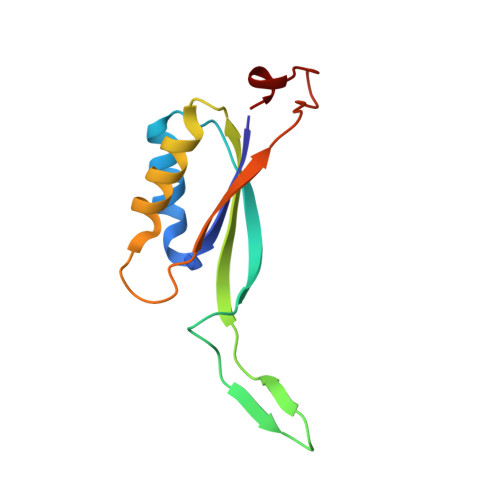Structure and Thermodynamics of Effector Molecule Binding to the Nitrogen Signal Transduction Pii Protein Glnz from Azospirillum Brasilense.
Truan, D., Bjelic, S., Li, X., Winkler, F.K.(2014) J Mol Biol 426: 2783
- PubMed: 24846646
- DOI: https://doi.org/10.1016/j.jmb.2014.05.008
- Primary Citation of Related Structures:
4CNY, 4CNZ, 4CO0, 4CO1, 4CO2, 4CO3, 4CO4, 4CO5 - PubMed Abstract:
The trimeric PII signal transduction proteins regulate the function of a variety of target proteins predominantly involved in nitrogen metabolism. ATP, ADP and 2-oxoglutarate (2-OG) are key effector molecules influencing PII binding to targets. Studies of PII proteins have established that the 20-residue T-loop plays a central role in effector sensing and target binding. However, the specific effects of effector binding on T-loop conformation have remained poorly documented. We present eight crystal structures of the Azospirillum brasilense PII protein GlnZ, six of which are cocrystallized and liganded with ADP or ATP. We find that interaction with the diphosphate moiety of bound ADP constrains the N-terminal part of the T-loop in a characteristic way that is maintained in ADP-promoted complexes with target proteins. In contrast, the interactions with the triphosphate moiety in ATP complexes are much more variable and no single predominant interaction mode is apparent except for the ternary MgATP/2-OG complex. These conclusions can be extended to most investigated PII proteins of the GlnB/GlnK subfamily. Unlike reported for other PII proteins, microcalorimetry reveals no cooperativity between the three binding sites of GlnZ trimers for any of the three effectors under carefully controlled experimental conditions.
Organizational Affiliation:
Macromolecular Crystallography, Swiss Light Source, CH-5232 Villigen PSI, Switzerland.















